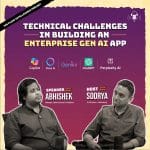In the world of Data and AI, ChatGPT stands as a towering achievement, reshaping how we create, communicate, and connect through text. Its capabilities extend far beyond mere conversation, offering a gateway to a realm where language transforms ideas into reality. However, the true mastery of this tool lies not in its inherent power but in how we harness it through effective prompting.
This blog is a journey into the art and science of crafting ChatGPT prompts. Here, we explore six transformative frameworks that act as keys to unlock the full spectrum of ChatGPT’s potential. Each framework serves as a lens, focusing the model’s vast capabilities into sharp, tailored responses that align precisely with your needs. Whether you’re generating creative content, seeking informative insights, or solving complex problems, these frameworks provide a structured approach to guide ChatGPT’s responses toward your desired outcomes.
Join us as we delve into the nuances of each framework, unraveling how they can convert your prompts from mere questions into powerful tools of creation and discovery. By the end of this guide, you will not only understand ChatGPT better but also wield it with greater skill and confidence, ready to unlock new possibilities in the realm of AI-assisted text generation.
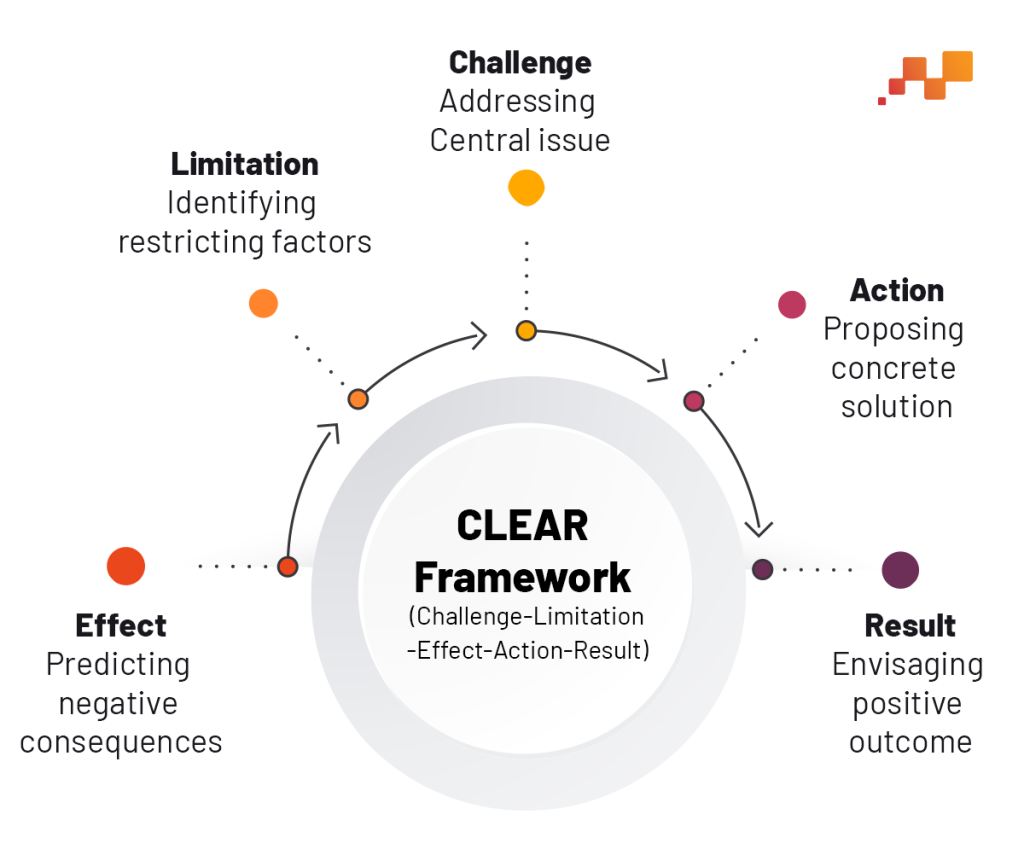
CLEAR Framework
The CLEAR framework is a structured approach to problem-solving and decision-making. It helps in articulating and addressing complex issues by breaking them down into five distinct components: Challenge, Limitation, Effect, Action, and Result. Here’s a detailed explanation of each element:
- Challenge: This is the primary issue or obstacle that needs to be addressed. It defines the problem in clear terms, setting the stage for further analysis.
- Limitation: Here, you identify constraints or restrictions that are impacting the situation. This could include resources, technology, knowledge, time, or other factors that limit your ability to address the challenge.
- Effect: This part involves predicting the consequences or implications of the challenge if it remains unaddressed. It highlights the importance of finding a solution by showing the potential negative outcomes.
- Action: This is the solution or strategy proposed to overcome the challenge and limitations. It should be a concrete plan or set of steps that can realistically be implemented to bring about change.
- Result: Finally, envisage the expected outcome or impact of the proposed action. This is where you articulate the positive change or benefit that will result from addressing the challenge.
Example Prompt Using CLEAR Framework:
Challenge: Our online education platform is experiencing a significant drop in student participation in interactive sessions.
Limitation: The current user interface is not user-friendly and lacks interactive features, which limits student engagement.
Effect: If this issue persists, we may see a decrease in course completion rates and overall satisfaction, negatively impacting our reputation and enrollment numbers.
Action: Develop and implement an enhanced user interface with interactive elements like quizzes, discussion boards, and live Q&A sessions to boost student engagement.
Result: By making these improvements, we expect to see an increase in student participation and engagement, leading to higher course completion rates and improved student satisfaction. This, in turn, should positively impact our platform’s reputation and attract more enrollments.
Complete Prompt: “We are facing a challenge of declining student participation in interactive sessions on our online education platform, limited by a user interface that is not user-friendly and lacks engaging features. This situation could lead to decreased course completion rates and reduced overall satisfaction, negatively affecting our reputation and enrollment numbers. To address this, we propose developing and implementing an enhanced user interface with interactive elements like quizzes, discussion boards, and live Q&A sessions. We anticipate that these improvements will result in increased student engagement and participation, leading to higher course completion rates, improved student satisfaction, and a positive impact on our platform’s reputation and enrollment figures.”
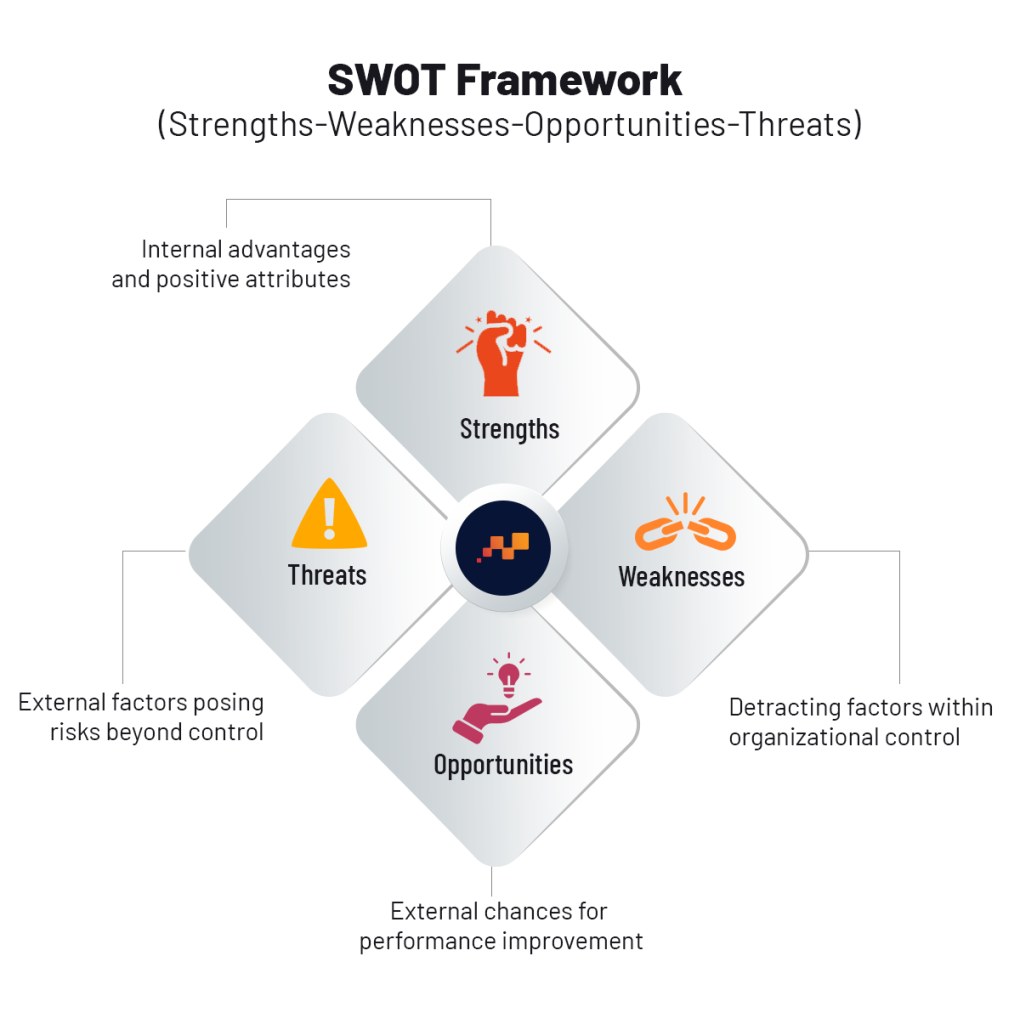
SWOT Framework
The SWOT analysis is a strategic planning tool used to evaluate the Strengths, Weaknesses, Opportunities, and Threats involved in a project or in a business venture. It provides a straightforward framework to assess internal and external factors that can impact the success of a decision, initiative, or business. Here’s a breakdown of each component:
- Strengths: These are the positive attributes internal to the organization or individual that are within control. Strengths could include skills, resources, capabilities, reputation, or other advantages.
- Weaknesses: These are factors that are within your control but detract from your ability to obtain or maintain a competitive edge. This might include lack of expertise, insufficient resources, limited experience, or other internal limitations.
- Opportunities: These are external chances to improve performance in the environment. They can include market growth, lifestyle changes, resolution of problems associated with current situations, and other external chances to improve your standing.
- Threats: These are external factors beyond your control that could place your strategy, or the business itself, at risk. They are largely out of your control but can include economic downturns, shifts in market requirements, or new competitors.
Meta’s LLAMA 2 Vs Open AI’s ChatGPT, Which one is better?

Example Prompt Using SWOT Analysis:
Strengths:
- Strong understanding of social media analytics
- Existing network in the industry
Weaknesses:
- Gaps in traditional marketing knowledge
Opportunities:
- Emerging trends in digital advertising
- Potential certifications in digital strategy
Threats:
- Rapid evolution of digital marketing tools
- Intense competition in the job market
Complete Prompt: “Analyze the position of someone aiming to advance in the field of digital marketing. Consider strengths like their strong understanding of social media analytics and existing network in the industry, weaknesses that include gaps in traditional marketing knowledge, opportunities presented by emerging trends in digital advertising and potential certifications in digital strategy, and threats such as the rapid evolution of digital marketing tools and intense competition in the job market.”
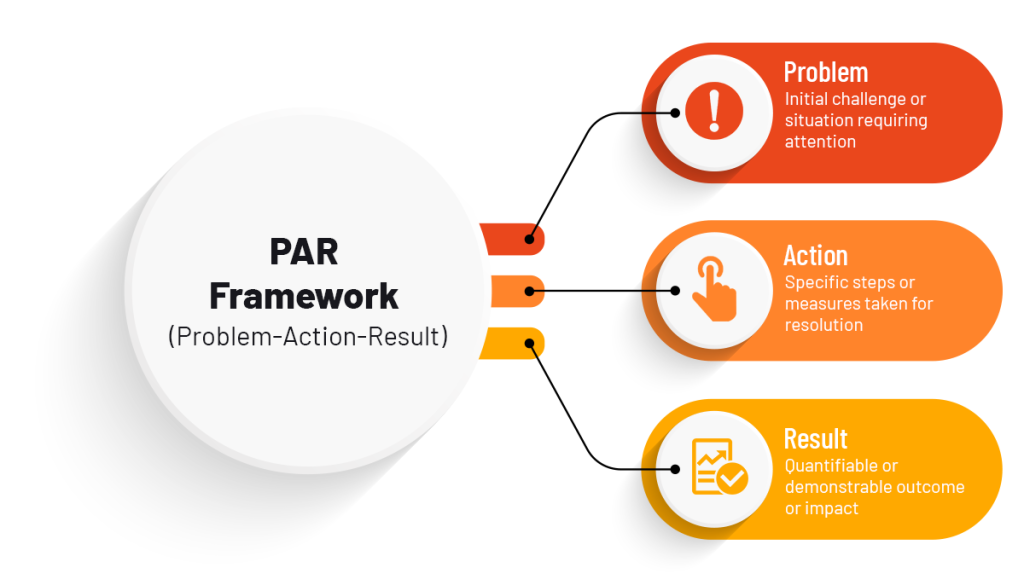
PAR Framework
The PAR (Problem-Action-Result) framework is a method used for structuring narratives, especially in contexts like job interviews, business case studies, or project management. It’s a way to succinctly tell a story by focusing on a specific problem, the actions taken to address it, and the results achieved. Here’s a detailed look at each component:
- Problem: This is the initial situation or challenge that needs to be addressed. It sets the context and illustrates the need for action. The problem should be clearly defined and specific.
- Action: This describes the specific steps or measures taken to solve the problem. It’s important to detail the actions clearly, showing your direct involvement (if it’s a personal story) or the strategic approach taken (in a business or project context).
- Result: This is the outcome or impact of the action taken. It should ideally be quantifiable or demonstrable, showing a clear connection between the action and the improvement or resolution of the problem.
Example Prompt Using PAR Framework:
Problem: A local bookstore was struggling with declining sales due to increased competition from online retailers and a lack of foot traffic in the shopping district.
Action: To counteract this, the bookstore implemented several strategies. They began hosting weekly community events, including author readings and book clubs, to draw in more customers. They also enhanced their online presence with a user-friendly website for online orders and actively engaged with customers on social media. Furthermore, they diversified their inventory to include unique, locally sourced items that couldn’t be found easily online.
Result: These changes led to a noticeable increase in both in-store and online sales within a few months. The community events became popular, creating a loyal customer base and generating positive word-of-mouth. The online sales channel also opened up a new revenue stream, making the bookstore more resilient against market.
Complete Prompt: “The local bookstore faced a problem of declining sales, challenged by the rise of online retailers and reduced foot traffic in the area. In response, they took several actions: they hosted weekly community events like author readings and book clubs to attract customers, improved their online presence with a user-friendly website, engaged actively on social media, and diversified their stock with unique, locally-sourced items. As a result of these initiatives, the bookstore saw a significant increase in both in-store and online sales within a few months, successfully built a loyal customer base, and enhanced its resilience against market fluctuations.”
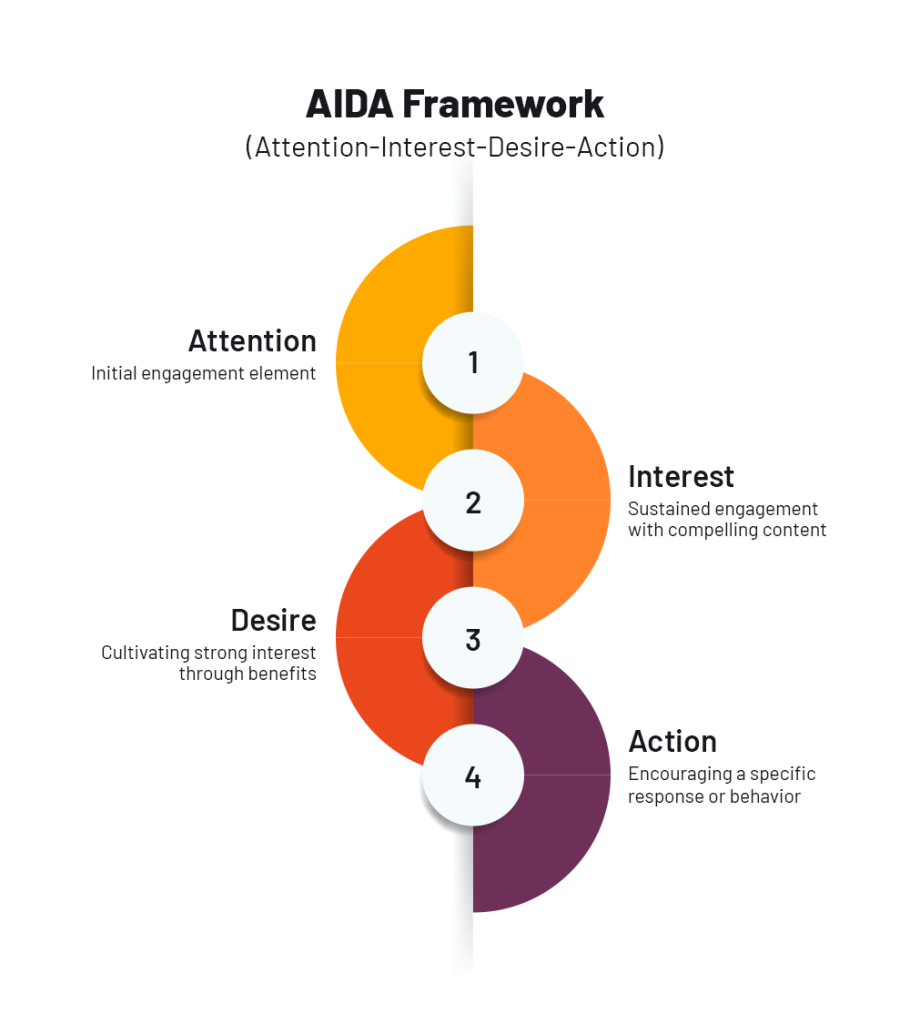
AIDA Framework
The AIDA framework is a classic marketing model used to guide the creation of advertisements and marketing communications. It outlines the four stages a customer goes through before making a purchase decision. Here’s a detailed look at each stage:
- Attention: The first step is to grab the audience’s attention. This can be achieved through eye-catching visuals, intriguing headlines, or any element that makes your message stand out and draws the audience in.
- Interest: Once you have their attention, the next step is to maintain their interest. This is typically done by providing more information about the product or service, telling a compelling story, or presenting intriguing facts that keep the audience engaged.
- Desire: After piquing their interest, the aim is to create a desire for the product or service. This involves highlighting the benefits and unique features of the product, showing how it solves a problem or improves the customer’s life, and making it desirable to the audience.
- Action: Finally, you prompt the audience to take specific action. This could be to make a purchase, sign up for a newsletter, visit a website, or any other action that moves them closer to becoming a customer. Calls to action (CTAs) are often used here, such as limited time offers, special discounts, or exclusive deals to encourage immediate action.
Example Prompt Using AIDA Framework:
Attention: Grab the audience’s attention with a bold statement about the increasing health challenges faced by people in modern life.
Interest: Maintain the audience’s interest by sharing inspiring success stories of users who have transformed their health using the fitness app.
Desire: Create a desire for the product by showcasing the app’s unique features, such as personalized workout plans, nutrition tracking, and access to virtual coaching.
Action: Encourage action with a compelling call to action: an exclusive offer of a 30-day free trial for the first 100 people who sign up, creating a sense of urgency and a strong incentive to download the app immediately.
Complete Prompt: “Create an advertisement for an innovative fitness app. Start by grabbing attention with a bold statement about the rising health challenges in modern life. Maintain interest by sharing success stories of users who transformed their health using the app. Stoke desire by showcasing the app’s unique features like personalized workout plans, nutrition tracking, and virtual coaching. Finally, prompt action with an exclusive offer: a 30-day free trial for the first 100 sign-ups, creating urgency and a compelling reason to download the app immediately.”
STAR Framework
The STAR (Situation-Task-Action-Result) framework is commonly used to structure responses, particularly in interviews or when presenting case studies. It provides a clear and logical narrative flow, enabling the speaker or writer to convey detailed information efficiently. Here’s an overview of each component:
- Situation: This element sets the context for the scenario. It involves describing the environment, circumstances, or challenges faced at the beginning. The situation should be specific and detailed enough to give a clear understanding of the background.
- Task: Here, you outline the specific responsibility or objective that needed to be addressed in the given situation. It defines what is needed to be accomplished or solved.
- Action: This part details the specific actions you or your team took to address the task. It’s important to focus on what you did, how you did it, and why you chose that particular course of action.
- Result: Finally, you share the outcomes or results of the actions taken. This should ideally include quantifiable results or clear evidence of the success or lessons learned from the experience.
Example Prompt Using STAR Framework:
Situation:
- The restaurant faced reduced customer visits due to new health guidelines
Task:
- The objective was to maintain revenue without compromising health and safety standards
Action:
- Launched a contactless delivery service
- Created a new takeout menu
- Implemented strict health protocols for staff
- Enhanced the restaurant’s online presence for better customer engagement
Result:
- Successfully retained most of the existing customer base
- Attracted new customers
- Achieved a steady stream of revenue despite the challenging circumstances
Complete Prompt: “Consider a restaurant facing the challenge of reduced customer visits due to new health guidelines. The task was to find alternative ways to maintain revenue without compromising on health and safety standards. The action taken included launching a contactless delivery service, creating a new takeout menu, and implementing strict health protocols for staff. Additionally, the restaurant boosted its online presence for better customer engagement. As a result, not only did the restaurant manage to retain most of its customer base, but it also attracted new customers, leading to a steady stream of revenue despite the challenging circumstances.”
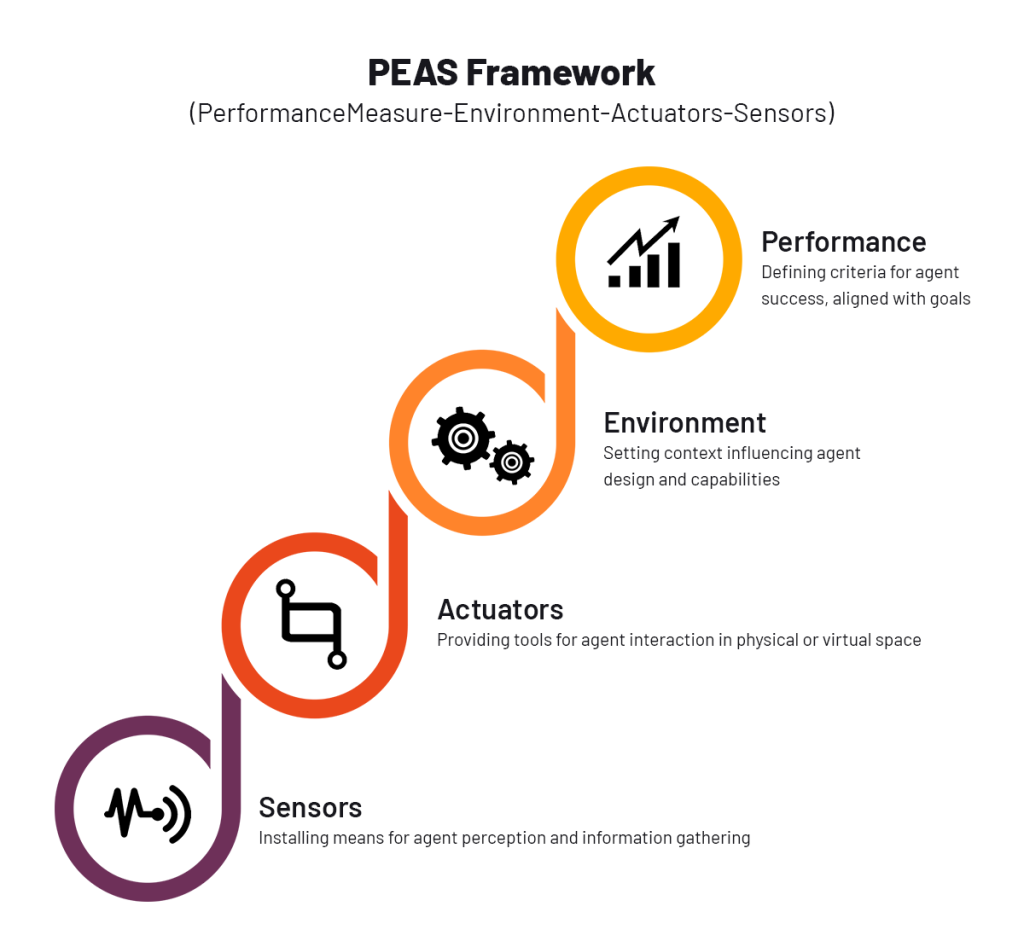
PEAS Framework
The PEAS (Performance measure, Environment, Actuators, Sensors) framework is commonly used in the field of artificial intelligence, particularly in designing intelligent agents. This framework helps in defining the essential components of an AI system. Here’s a detailed explanation of each component:
- Performance Measure: This defines the criteria for success in the agent’s task. It’s what you use to evaluate how well the agent is performing. The performance measure should be specific and quantifiable, aligning with the overall goals of the system.
- Environment: This refers to the context or setting in which the agent operates. The environment can vary greatly depending on the task, ranging from a physical environment to a virtual or conceptual one. Understanding the environment is crucial as it influences the design and capabilities required of the agent.
- Actuators: These are the tools or mechanisms through which the agent interacts with its environment. In the context of AI, actuators could be physical (like a robotic arm) or virtual (like a software function). They are the means by which the agent carries out actions to achieve its goals.
- Sensors: Sensors are how the agent perceives its environment. They can be literal sensors (like cameras or microphones in a robot) or data inputs (like user input in software). Sensors provide the information that the agent needs to make decisions and act.
Example Prompt Using PEAS Framework:
Performance Measure:
- Optimize the autonomous greenhouse management system’s performance in maintaining ideal growing conditions for plants
Environment:
- The controlled environment of a greenhouse, where various factors like temperature, humidity, and light need to be managed for plant growth
Actuators:
- Automated watering systems to ensure plants receive the right amount of water
- Automated lighting systems to provide necessary light exposure for the plants
Sensors:
- Temperature sensors to monitor the ambient temperature inside the greenhouse
- Humidity sensors to assess the moisture level in the air
- Soil moisture sensors to determine when plants need watering
Complete Prompt: “Optimize an autonomous greenhouse management system’s performance within the controlled environment of a greenhouse. This system should use automated watering and lighting systems to maintain optimal growing conditions, and rely on sensors like temperature, humidity, and soil moisture sensors to monitor the environment and adjust conditions as needed.”
Crafting Success across Domains with Dynamic Frameworks
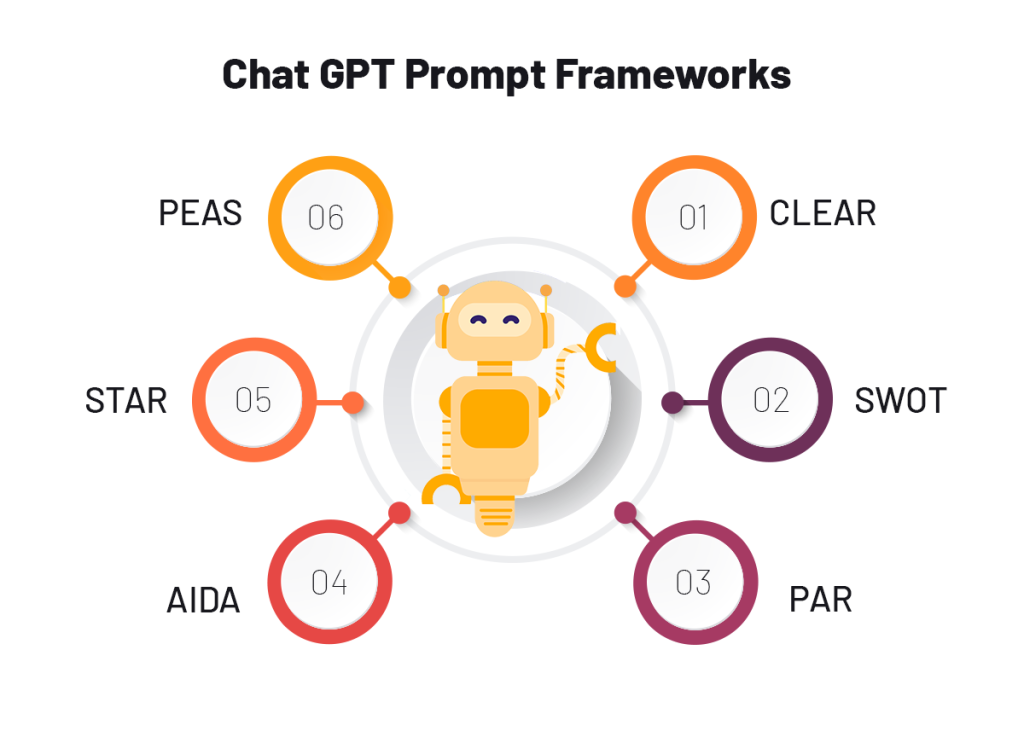
These diverse frameworks offer valuable methodologies across various fields, each tailored to specific applications and goals.
- CLEAR is particularly effective in business and project management scenarios. It provides a structured approach to identifying challenges, understanding limitations, and proposing actionable solutions while anticipating outcomes. This framework is ideal for tackling complex problems where multiple factors influence decision-making.
- SWOT, a staple in strategic planning, is versatile and can be applied in AI prompting, business analysis, and personal career planning. It helps in evaluating situations or decisions from all angles, ensuring a comprehensive understanding of strengths, weaknesses, opportunities, and threats.
- PAR is primarily used in behavioral interview contexts, making it a key tool for job seekers and interviewers alike. It’s excellent for illustrating one’s problem-solving skills and decision-making process in real-world scenarios, providing a narrative that clearly demonstrates effectiveness in overcoming challenges.
- AIDA is a quintessential marketing framework, crafted to create compelling content that captures attention, sustains interest, builds desire, and drives action. Its application extends to advertising, digital marketing, content creation, and any context where engaging an audience is crucial.
- STAR is another framework widely used in behavioral interviews. It allows candidates to present their experiences and skills in a story-like format, making it easier for interviewers to understand their roles, actions, and the outcomes of their efforts. This framework is also useful in personal branding and professional storytelling.
- PEAS, on the other hand, is specifically tailored for the design and development of AI systems. It provides a structured approach to defining the capabilities and scope of AI agents, ensuring that all critical aspects of system design – from sensory inputs to performance measures – are thoroughly considered.
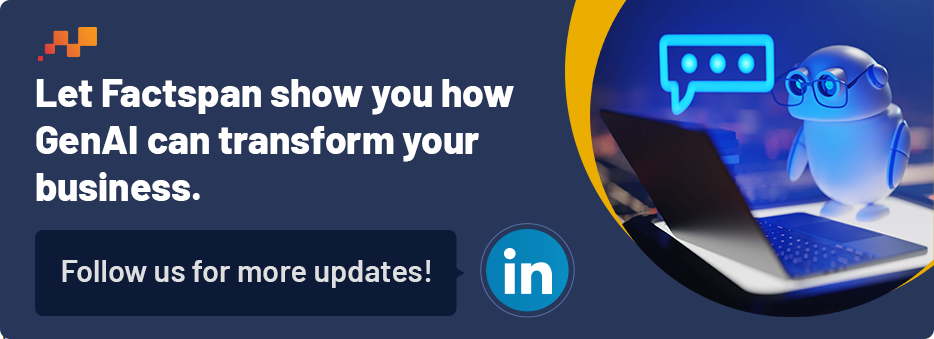
Collectively, these frameworks serve as powerful tools across various domains, from Data and AI, business marketing, personal development, and much more. Their flexibility and structured approach enable clear thinking, effective problem-solving, and strategic planning in diverse contexts. As we navigate the evolving space of information and technology, prompt engineering powered by these frameworks can shape new ways to utilize the potential of language models for unprecedented advancements in communication, decision-making, and innovation.







